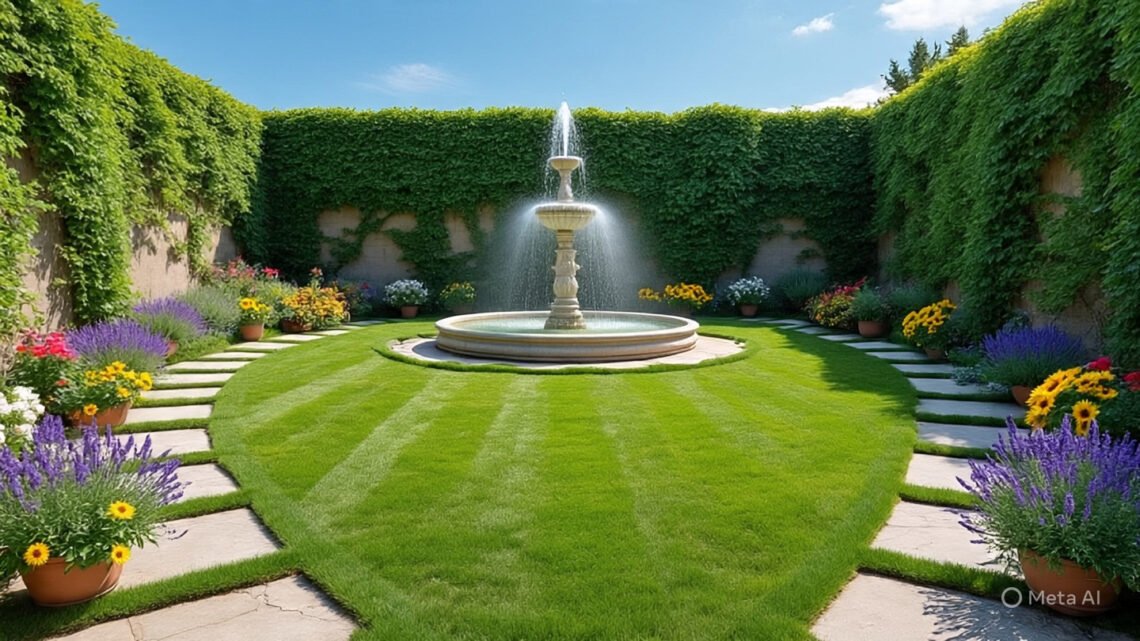🌿 How to Recreate Italian Gardens in Your Backyard (Step-by-Step Guide)
Imagine walking into your backyard and feeling as though you’ve stepped into a Tuscan villa or a Renaissance courtyard. Italian gardens are known for their timeless elegance, symmetry, and harmonious blend of architecture and nature.
As someone who has studied European landscape styles and experimented with Mediterranean-inspired designs, I’ll share practical steps to recreate an Italian-style garden in your own backyard, no matter the size.
🌍 What Makes an Italian Garden Unique?
Italian gardens are rooted in Renaissance principles of order, beauty, and proportion. Some defining features include:
- Symmetry & Geometry – Straight pathways, balanced plantings, and structured layouts.
- Stone & Architecture – Terraces, fountains, statues, and pergolas.
- Evergreen Plants – Cypress trees, boxwood hedges, and olive trees.
- Water Features – Reflecting pools, fountains, and birdbaths.
- Mediterranean Plants – Herbs, fruit trees, and fragrant flowers.
🛠️ How to Recreate an Italian Garden in Your Backyard
Step 1: Plan the Layout
- Use formal symmetry (mirrored design on both sides).
- Create central focal points like a fountain, sundial, or statue.
- Divide space into geometric sections (squares, circles, rectangles).
Step 2: Choose Hardscaping Materials
- Install gravel or stone pathways.
- Add a stone bench or terrace.
- Use terracotta pots for herbs and flowers.
Step 3: Select Plants with Italian Character
- Trees & Shrubs: Cypress, boxwood, olive, bay laurel.
- Herbs & Edibles: Rosemary, thyme, basil, lavender, figs, lemons (in pots if cold climate).
- Flowers: Roses, geraniums, wisteria, jasmine.
Step 4: Add a Water Feature
- Install a fountain (wall-mounted or freestanding).
- If space allows, create a reflecting pool or small pond.
Step 5: Decorate with Classical Touches
- Place statues, urns, or sundials strategically.
- Build a pergola covered with climbing roses or grapes.
- Use warm-toned lighting for evening ambiance.
🌼 Low-Maintenance Tips for Italian Gardens
- Opt for drought-tolerant Mediterranean plants.
- Use automatic drip irrigation.
- Mulch pathways with gravel to reduce weeds.
- Prune hedges regularly to maintain symmetry.
❓ FAQs About Italian Gardens
Q1: Can I create an Italian garden in a small backyard?
Yes! Even a balcony or patio can capture the essence with terracotta pots, herbs, and a small fountain.
Q2: Do Italian gardens require a lot of water?
Not necessarily—many Mediterranean plants are drought-resistant.
Q3: What climate is best for Italian gardens?
Warm, Mediterranean-like climates work best, but you can adapt with pots, cold-hardy plants, or greenhouses.
Q4: Are Italian gardens expensive to build?
They can be budget-friendly if you start with DIY stonework, container plants, and small water features.
Q5: What’s the difference between Italian and French gardens?
Italian gardens focus more on terraces, water, and Mediterranean plants, while French gardens emphasize expansive lawns and intricate parterres.
📖 Related Articles
- The History of Italian Renaissance Gardens – A look at their origins and evolution.
- Top 7 Herbs for Mediterranean-Style Gardens – Easy plants that thrive in pots.
- DIY Garden Path Ideas – Gravel, stone, and tile pathways explained.
👩💼 Author E-E-A-T Bio
Written by: Ecorganicas
Ecorganicas is a gardening enthusiast and landscape blogger specializing in Mediterranean and European-inspired garden styles. With over 10 years of experience in blogging.
Discover more from Ecorganicas
Subscribe to get the latest posts sent to your email.






